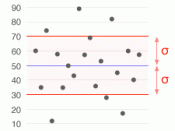1)
Introduction
This paper will also analyse the nature of risk environment facing the producer and distributor and the actions taken to reduce such risk. What will follow is an analysis of the US film industry and the film released during 1992. I will look at star and genre distribution and also market share of the major US distributors.
Annual Distribution of revenues
The annual distribution of revenues seems to be declining gradually from the top ten films to the films in the lower ranks. During 1992 Aladdin was the biggest box office smash generating $214.4 million. The lowest ranking film was High Strung, which made $904 (see appendix 1 for full top 50 and bottom 50 films).
There are three main assumptions, which seem to support this appearance of the industry. Vogel (1994) has that the top twenty grossing films of any year account for 40% of that years box office total, with a giant hit every so often temporarily boosting the percentage.
An example of such a giant hit will be Aladdin, which grossed $214.4 million on its own. The second assumption is from the Media Business School (1995) who have said that most cinemas are relying on blockbusters, as a small number of titles are responsible for growing proportion of the box office. The cinemas are therefore trying to secure high visitor numbers to retain particular level of revenues and to lower the risks of being driven out of business. The third main reason for the box office appearance is; generally the big box office films tend to lure filmgoers with intensive advertising, the media and word of mouth. A clearer way to look at the inequality in revenues is to analyse the top twenty movies and bottom twenty movies (see fig 1).
Figure 1
Top 1...


